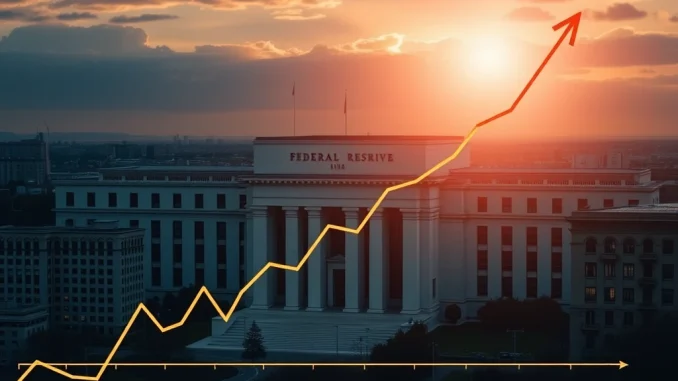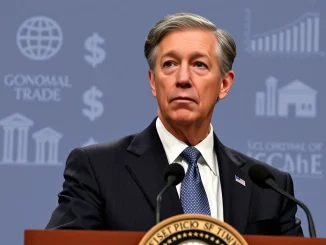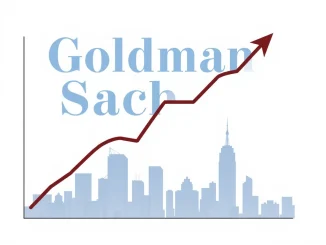
Hold onto your hats, crypto enthusiasts! The latest economic figures are in, and they’re painting a picture that could ripple through the cryptocurrency markets. The U.S. Bureau of Economic Analysis just dropped the February PCE data, and it’s hotter than expected, raising fresh concerns about inflation. Let’s dive into what this means for your digital assets and the broader economic outlook.
Decoding the February PCE Data: A Closer Look
For those not steeped in economic jargon, PCE data—Personal Consumption Expenditures—is a crucial yardstick for measuring inflation. It tracks the prices of goods and services purchased by individuals. Think of it as a comprehensive look at what you and I are spending our money on and how those prices are changing.
Here’s the crux of the matter:
- Month-over-Month Increase: The PCE price index jumped by 0.4% in February. Economists were anticipating a 0.3% uptick. While seemingly a small difference, in the world of economic forecasting, these fractions matter.
- Year-over-Year Rise: Looking at the bigger picture, the PCE climbed 2.8% compared to February of last year. This also edged past expectations, which were set at 2.7%.
- Core PCE – The Fed’s Favorite Metric: The core PCE, which strips out volatile food and energy prices to give a clearer view of underlying inflation trends, is particularly important. The Federal Reserve keeps a very close eye on this.
Why Does the PCE Data Matter, Especially for Crypto?
You might be wondering, “Okay, numbers are up, so what? How does this affect my Bitcoin or Ethereum holdings?” The connection is more direct than you might think. Here’s why the PCE data and inflation readings are critical for the crypto market:
- Federal Reserve’s Response: The Federal Reserve‘s primary mandate is to maintain price stability. When inflation runs hotter than they’d like, their main tool to cool things down is raising interest rates.
- Interest Rates and Risk Assets: Higher interest rates generally make borrowing more expensive. This can lead to a tightening of financial conditions. Assets perceived as “riskier,” like cryptocurrencies and tech stocks, can become less attractive compared to safer, yield-bearing assets like bonds.
- Investor Sentiment: Elevated inflation and the prospect of continued interest rate hikes can dampen investor sentiment. Fear and uncertainty can creep into the markets, leading to sell-offs in volatile asset classes like crypto.
- Dollar Strength: Interest rate hikes can also strengthen the U.S. dollar. A stronger dollar can sometimes exert downward pressure on crypto prices, particularly when Bitcoin is often priced against the dollar.
Decoding the Economic Outlook: What Could Happen Next?
The latest PCE data injects a dose of uncertainty into the economic outlook. Here are a few potential scenarios and factors to consider:
- Hawkish Fed Stance: The hotter-than-expected inflation readings might embolden the Federal Reserve to maintain a more hawkish stance on monetary policy. This could mean further interest rate increases or a slower pace of rate cuts than previously anticipated.
- Inflation Persistence: The data suggests that inflation might be proving more persistent than initially hoped. This could lead to a prolonged period of higher interest rates and tighter financial conditions.
- Economic Slowdown: Aggressive interest rate hikes, while aimed at curbing inflation, also carry the risk of slowing down economic growth. A significant economic downturn could further impact risk assets, including crypto.
- Market Volatility: Expect continued volatility in the crypto markets as investors digest the PCE data and speculate on the Federal Reserve‘s next moves.
Navigating the Uncertainty: Actionable Insights for Crypto Investors
So, what should crypto investors do in light of this new economic outlook? Here are some actionable insights:
- Stay Informed: Keep a close watch on further economic data releases, especially inflation reports and statements from the Federal Reserve.
- Manage Risk: In times of uncertainty, prudent risk management is key. Consider diversifying your portfolio and not over-allocating to highly volatile assets.
- Long-Term Perspective: Remember that the crypto market is inherently volatile and operates in cycles. Focus on the long-term potential of your investments and avoid making impulsive decisions based on short-term market fluctuations.
- Dollar-Cost Averaging: For those looking to build positions in crypto, dollar-cost averaging can be a strategy to mitigate risk by spreading purchases over time, regardless of short-term price swings.
Conclusion: Inflation Jitters and the Crypto Road Ahead
The February PCE data has thrown a curveball, signaling that the fight against inflation is far from over. This news has injected a dose of caution into the economic outlook and could have implications for the crypto market. While uncertainty prevails, staying informed, managing risk, and maintaining a long-term perspective are crucial for navigating the evolving landscape. The Federal Reserve‘s response to these inflation signals will be pivotal in shaping the near-term trajectory of both the traditional and cryptocurrency markets. Buckle up; it’s likely to be an interesting ride!



